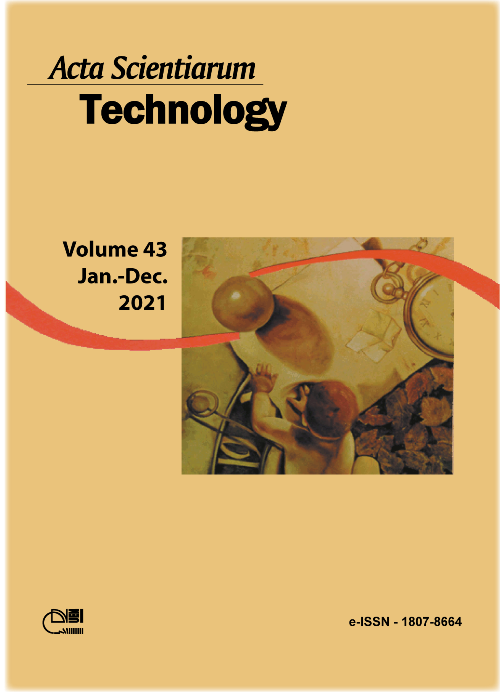Agro-industrial waste as a source of bioactive compounds: ultrasound-assisted extraction from blueberry (Vaccinium myrtillus) and raspberry (Rubus idaeus) pomace
DOI:
https://doi.org/10.4025/actascitechnol.v43i1.55567Palavras-chave:
Eco-friendly; experimental design; antioxidant analysis; anthocyanins.Resumo
Blueberry and raspberry pomace are a rich source of bioactive compounds that have not been commercially utilized yet, and ultrasound-assisted technology can efficiently extract these compounds. Also, the use of water as a solvent added to the ultrasound-assisted technology improves this eco-friendly process. Therefore, an aqueous eco-friendly extraction, including extraction time and ultrasound presence or absence (conventional extraction) was performed in order to extract bioactive compounds from blueberry and raspberry pomace. Response parameters included levels of anthocyanins, phenolic compounds, and flavonoids, and antioxidant activity determined by DPPH, ABTS, and FRAP methods. Analysis of variance results indicated that ultrasound-assisted extraction for 45 min. was feasible to extract the bioactive compounds. The antioxidant content of the extract obtained by the ultrasound-assisted process was 1.4 times higher on average and the total phenolic concentration was 1.6 times higher (for blueberry 5.02 and for raspberry 2.53 mg gallic acid equivalent/g) compared with those obtained by the conventional process. Thus, the ultrasound-assisted extraction method can be a profitable alternative to extract bioactive compounds from blueberry and raspberry pomace, as it is energy efficient, requires fewer chemicals, and produces less effluent. This eco-friendly technology is therefore viable for food, nutraceutical, and cosmetic industries, and also for reducing food waste.
Downloads
Downloads
Publicado
Como Citar
Edição
Seção
Licença
DECLARAÇíO DE ORIGINALIDADE E DIREITOS AUTORAIS
Declaro que o presente artigo é original, não tendo sido submetido í publicação em qualquer outro periódico nacional ou internacional, quer seja em parte ou em sua totalidade.
Os direitos autorais pertencem exclusivamente aos autores. Os direitos de licenciamento utilizados pelo periódico é a licença Creative Commons Attribution 4.0 (CC BY 4.0): são permitidos o compartilhamento (cópia e distribuição do material em qualqer meio ou formato) e adaptação (remix, transformação e criação de material a partir do conteúdo assim licenciado para quaisquer fins, inclusive comerciais.
Recomenda-se a leitura desse link para maiores informações sobre o tema: fornecimento de créditos e referências de forma correta, entre outros detalhes cruciais para uso adequado do material licenciado.















